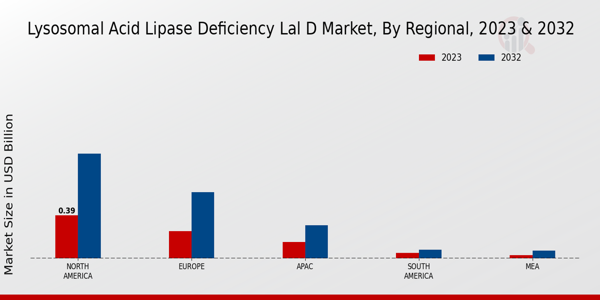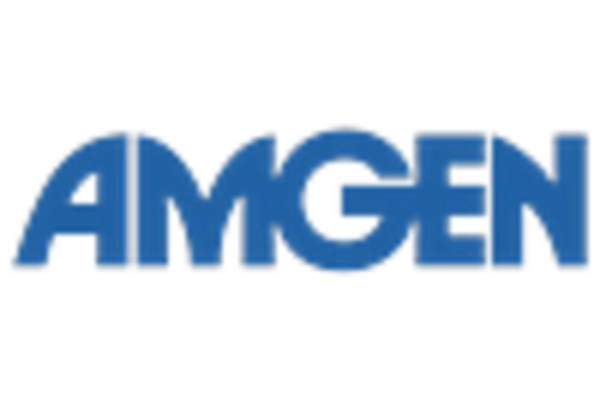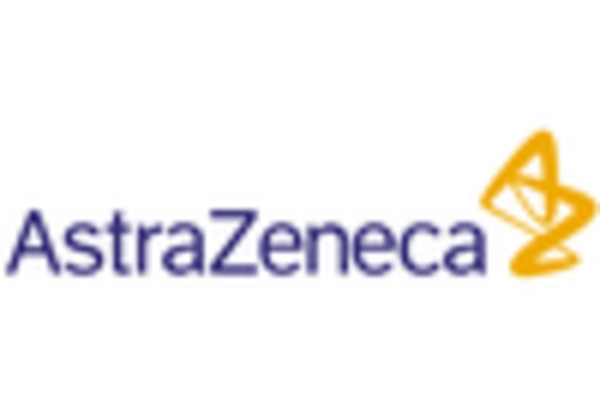Advancements in Gene Therapy
Innovations in gene therapy represent a transformative force within the LAL D Market. Recent advancements have shown promise in addressing the underlying genetic causes of Lysosomal Acid Lipase Deficiency. Clinical trials are currently exploring various gene-editing techniques, which may offer long-term solutions for patients. The potential for curative therapies could significantly alter the treatment landscape, shifting focus from symptomatic management to disease modification. As these therapies progress through clinical development, they are likely to attract substantial investment and interest from pharmaceutical companies. The anticipated approval of gene therapies could lead to a surge in treatment options available for patients, thereby expanding the LAL D Market and enhancing patient outcomes.
Enhanced Diagnostic Technologies
The evolution of diagnostic technologies is significantly impacting the LAL D Market. Advances in genetic testing and biomarker identification are enabling earlier and more accurate diagnosis of Lysosomal Acid Lipase Deficiency. Enhanced screening methods, such as next-generation sequencing, are becoming more accessible, allowing for the identification of LAL D in asymptomatic individuals. This early detection is crucial, as it can lead to timely intervention and better management of the disease. As diagnostic capabilities improve, healthcare providers are likely to increase their focus on screening for LAL D, which will subsequently drive demand for therapeutic options. The integration of advanced diagnostics into clinical practice is expected to play a pivotal role in shaping the future of the LAL D Market.
Regulatory Incentives for Drug Development
Regulatory incentives aimed at promoting the development of treatments for rare diseases are a significant driver for the LAL D Market. Various regulatory bodies have established frameworks that facilitate faster approval processes for orphan drugs, including those targeting Lysosomal Acid Lipase Deficiency. These incentives often include tax credits, grants, and extended market exclusivity, which can make the development of new therapies more financially viable for pharmaceutical companies. As a result, there is a growing interest in developing innovative treatments for LAL D, which could lead to a more diverse range of therapeutic options for patients. The supportive regulatory environment is likely to encourage investment in the LAL D Market, fostering a landscape ripe for innovation and growth.
Growing Investment in Rare Disease Research
The increasing investment in research and development for rare diseases, including Lysosomal Acid Lipase Deficiency, is a notable driver for the LAL D Market. Governments and private entities are recognizing the need for targeted therapies for orphan diseases, which has led to enhanced funding opportunities. In recent years, initiatives aimed at accelerating drug development for rare conditions have gained momentum, resulting in a more favorable environment for innovation. This influx of capital is likely to facilitate the discovery of new therapeutic agents and improve existing treatment modalities. As a result, the LAL D Market stands to benefit from a more robust pipeline of potential therapies, ultimately improving patient access to effective treatments.
Increasing Prevalence of Lysosomal Acid Lipase Deficiency
The rising incidence of Lysosomal Acid Lipase Deficiency (LAL D) is a crucial driver for the LAL D Market. Recent estimates suggest that LAL D affects approximately 1 in 40,000 to 1 in 300,000 individuals, depending on the population studied. This increasing prevalence is likely to lead to a higher demand for diagnostic testing and treatment options. As awareness grows among healthcare professionals and patients, more individuals are being diagnosed, which in turn fuels the market for therapies and management strategies. The need for effective treatments is underscored by the potential for severe complications associated with untreated LAL D, including liver disease and cardiovascular issues. Consequently, the LAL D Market is poised for growth as healthcare systems adapt to meet the needs of this expanding patient population.


















Leave a Comment